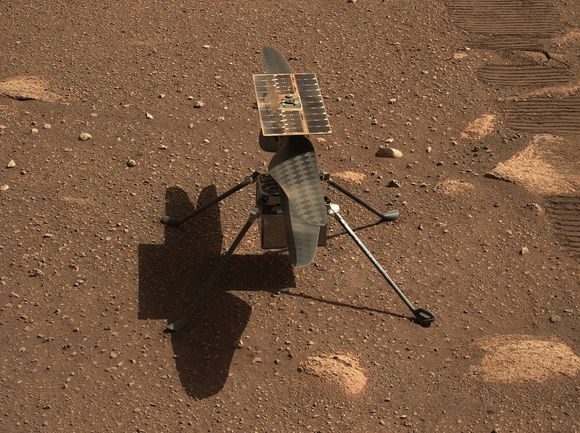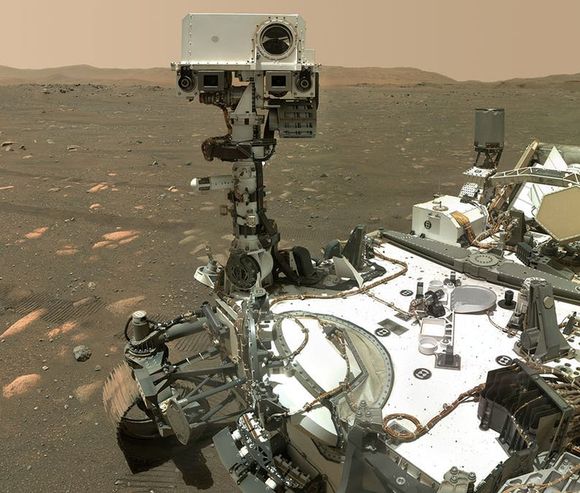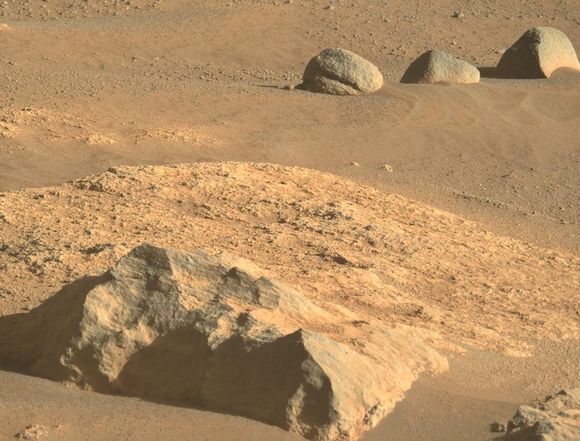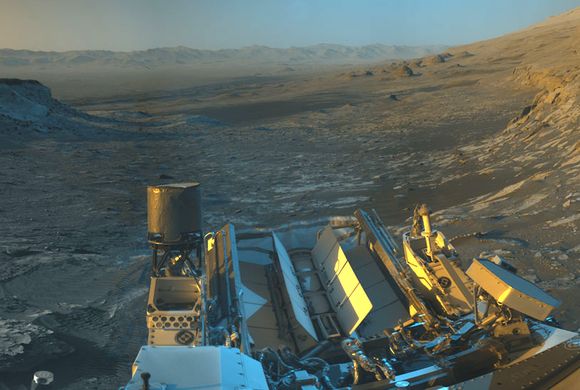It's been over 300 Sols (Martian days) since the Perseverance rover touched down in Jezero crater and so far things are going according to plan, in some respects better than project planners dared to have hoped for. Perseverance is in a healthy state, busy exploring the route mapped out by committee, but sometimes guided by the findings of its small air bourn companion - Ingenuity. This small trailblazing helicopter has performed way beyond expectation and demonstrating that Ariel flight is possible in the thin Martian atmosphere. Slated originally for perhaps 5 or 6 flights, Ingenuity has now completed 17 and pushed its total flight time past the 30-minute mark. The copter has travelled over the surface a distance of 2.2 miles (3,592 meters), reaching heights of 40 feet (12 meters) and travelling as fast as 10 mph (5 meters per second). It is currently back near the original airfield (Wright Brother's) it made the first historic flight from and awaiting the return of Perseverance which is exploring the “South Séítah” region of Mars’ Jezero Crater.
As for the rover itself, well, Percy is doing fine and has already discovered “organic molecules” in rocks in Jezero Crater. This organic material found by SHERLOC (the Scanning Habitable Environments with Raman & Luminescence for Organics & Chemicals) instrument, was detected not only in the interior of the rock, but also in the dust on other rocks. Caution must be exercised though, as this does not necessarily mean that life once existed on Mars, as there are both biological and non-biological mechanisms that could be responsible for the organics’ presence. Further analysis will be required to properly examine the biosignatures once the samples are eventually returned back to Earth before the method of production for the identified organics can be determined.
Scientists have discovered that the bedrock Perseverance has been travelling on since landing in February likely formed from red-hot magma. This surprising discovery has implications for understanding and accurately dating critical events in the history of Jezero Crater – as well as the rest of the planet. The team has also concluded that rocks in the crater have interacted with water multiple times over the eons and that some contain organic molecules. The rover has also the unique distinction of becoming the first spacecraft to record the sounds of the Red Planet through dedicated microphones. These sounds:- deep clicking noises from a laser, buzzing rotors, rover wheels crunching gravel, hold significant value and will help scientists know more about the planet’s atmosphere ie - how sound travels across the planet.
Let’s not forget about NASA’s other rover Curiosity, which is still on the move carrying out science. As of December 24, 2021, Curiosity has been active on Mars for 3336 sols (3427 total days; 9 years, 140 days) since its landing. It still has a way to go to break NASA's mini rover Opportunity's record of almost 15 years on the Martian surface! Curiousity is currently traversing a valley on Mount Mercou, a rocky outcrop on the slopes of Mt Sharp in Gale crater. The image below is a view looking back down the valley towards Gale Crater.
The view from Curiosity on Mt Sharp looking back down to the floor of Gale Crater.
(click for full image)
All images - NASA
- Log in to post comments





